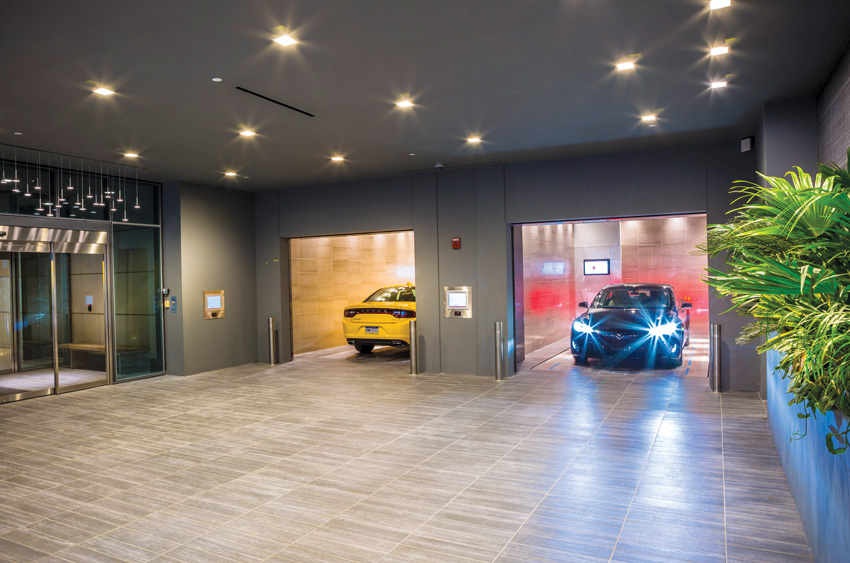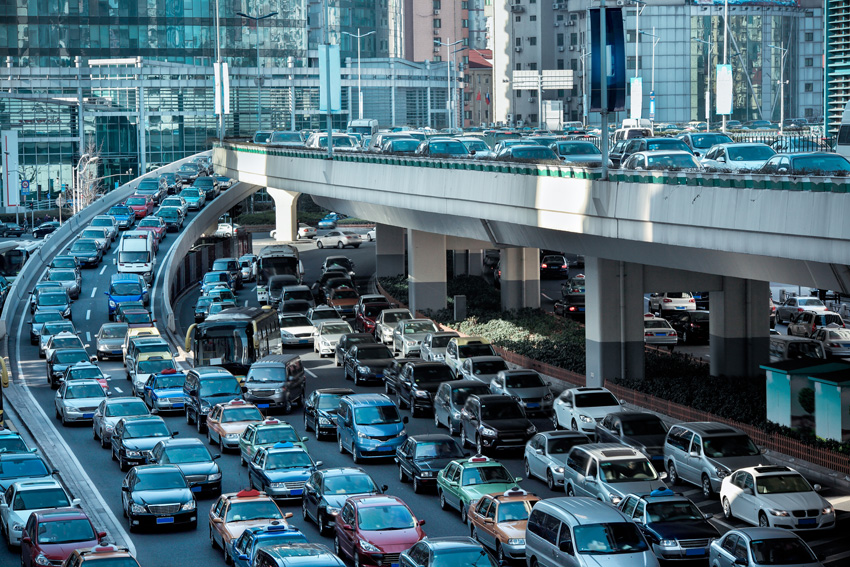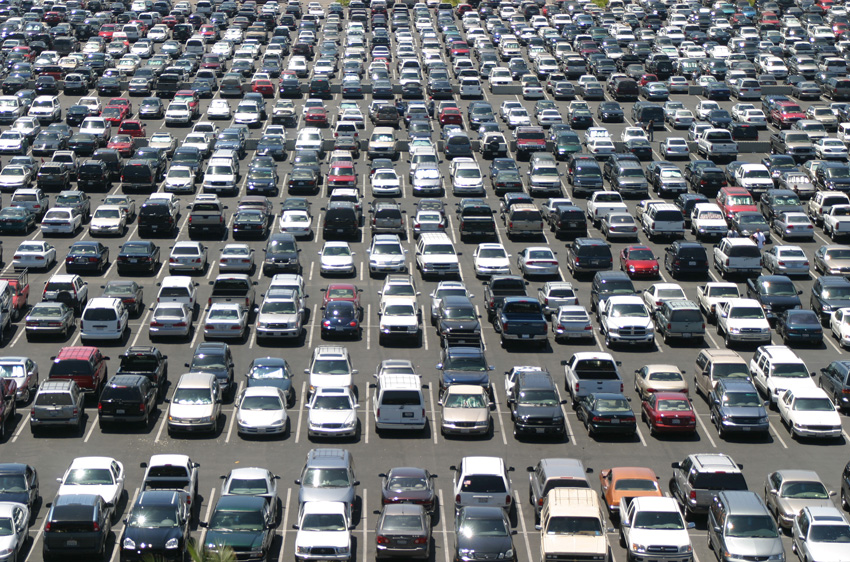The Evolution of Parking
Learning Objectives:
- Discuss land design challenges in large urban areas with increasing numbers of automobiles and shrinking available space for conventional parking garages.
- Describe how innovations in automated parking systems are changing urban land-use patterns, allowing forward-thinking designers to preserve on-grade space for parks, recreation, and buildings.
- Assess the space-saving, user-experience, safety, and environmental benefits of automated parking systems.
- Explain the benefits of automated parking systems to property developers and owners in terms of cost, space savings, labor savings, and energy savings as well as the benefits of a turnkey approach to specifying such a system in a project.
Credits:
This course is approved as a Structured Course
This course can be self-reported to the AANB, as per their CE Guidelines
Approved for structured learning
Approved for Core Learning
This course can be self-reported to the NLAA
Course may qualify for Learning Hours with NWTAA
Course eligible for OAA Learning Hours
This course is approved as a core course
This course can be self-reported for Learning Units to the Architectural Institute of British Columbia
You’re in a big city, and it’s time to park your car. Feel the tension rising? But imagine this: You drive into a dense metropolitan area. Unlike in years past, you feel no growing tension about finding a parking spot, dodging other cars in a parking garage, breathing exhaust fumes, or dealing with a valet. Instead, you see a sign that indicates “parking,” and you steer your car into a luxurious transfer area. Just outside the transfer area you see a touchscreen, which asks you a few questions: “Have you taken your keys with you? Have you removed belongings you need?” Upon the affirmative, you indicate that you want your vehicle stored for a few hours. The door to the enclosure slides down, and you walk away. Your role is complete.

Photo courtesy of Westfalia Technologies, Inc.
But inside the automated garage is where the action begins. A sophisticated melding of machinery and software shifts devices beneath your car, lifts it slightly, and backs it out of the transfer area. The machinery turns your car 180 degrees and transports it to a tight storage slot in a finely orchestrated sequence of movements. The parking garage is quiet and dark with the whirring of machinery and movement of gears. Exhaust fumes do not permeate the space because none of the engines are running. Upon your return, with a series of indications to the touchscreen, the machinery deposits your car back into the transfer area, facing outward, and the sliding door lifts. Average time for retrieval is about 2½ minutes. You ease into your vehicle and drive away.

Photo courtesy of Westfalia Logistics Solutions Europe
In an automated parking system, the vehicle is driven in forward but rotated on a turntable so that when it is retrieved, the driver can pull out forward and not have to back up into the street.
Does this sound like science fiction, a futuristic vision of a utopian city? In fact, “smart” parking methods like this exist today and have been operating in large cities such as New York City, Philadelphia, Copenhagen, and many large cities around the world for more than a decade. They are known as automated parking systems, or APS. In fact, such a system is automatically parking cars via this method at this very moment in Philadelphia. Systems like this could be specified today into many urban projects now being designed where land and parking spots are at a premium, from office buildings to hospitals, airports, multifamily units, and other uses.
“Developers and architects are increasingly looking at automated parking systems,” says Ian Todd, director of automated parking systems at Westfalia Technologies, a leading vendor of automated parking systems. “That’s because they are becoming more aware of the inherent advantages of these systems over conventional parking, namely: space savings, making the whole parking experience more convenient, safe, and luxurious for the user; a more sustainable solution due to the reduced emissions, landfill, and energy consumption; and cost savings due to lower construction, operational, and finishing costs and accelerated depreciation of the automated parking system equipment.”
More Cars and Denser Cities: A Difficult Mix
Why is this important now? For the first time in history, more than half of the world’s population is living in urban areas. With more people living in cities, residents and visitors often spend more and more time looking for available parking.

Photo courtesy of Westfalia Logistics Solutions Europe
An estimated 17 million new cars and trucks will be sold during 2018. This is due to rising populations, lower unemployment rates, and a large section of cars for every taste and budget.
According to an article in USA Today, “Searching for parking is more painful than ever for U.S. drivers.”1 The typical driver spends, on average, 17 hours a year searching for open parking spots. This adds up to an estimated $345 per driver in time, fuel, and emissions. This is according to a study by INRIX, a leading specialist in connected car services and transportation analytics.
In New York City, according to the study, the average driver spends 107 hours a year looking for empty parking spaces, adding up to $2,243 in wasted time, fuel, and emissions per driver. In total, this issue costs residents, commuters, and tourists in New York City $4.3 billion per year.
A United Nations report highlighting the need for more sustainable urban planning and public services estimates that by 2050, two out of every three people in the world will be living in cities or other urban areas. In order to support this rapid growth, cities will be challenged with expanding resources and infrastructure, including housing and parking.
Land Use Challenges and the Problem of Conventional Parking
According to a study by the National Automobile Dealers Association (NADA), 16.8 million new cars and trucks are expected to be sold in the United States by the end of 2019. These rising numbers are driven by several factors, including rising populations, lower unemployment rates, and a wider array of car options that suit every budget and need.

Photo courtesy of Westfalia Logistics Solutions Europe
The average car driven by one person is parked 95 percent of the time.
While this is great news for the automotive industry, it continues to create a dilemma for architects and building developers in the residential, office, and commercial real estate markets as well as the airport and hospitality sectors.
With more cars on the road each year, developers are now tasked with creating ample parking to accommodate them on top of tight budget constraints and already limited building footprints, particularly in congested cities.
According to an article in Fortune magazine, the average car is parked 95 percent of the time when a single person drives it, meaning these new cars will need new spaces to park.2
















